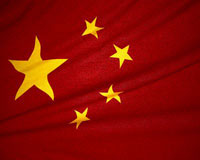Every investor needs to have China investment strategy
By William Patalon III

With the opening ceremonies for the 2008 Beijing Summer Olympic Games, this is probably as good a time as any to review the long-term case for a China investment strategy, and to look at the key factors investors should keep in mind as they put their investment plans into action.
An old Wall Street adage holds that "the trend is your friend," a precept that we wholeheartedly subscribe to. Indeed, as we’ve often told readers, the very best profit plays you’ll find will emanate from such powerful global market trends as globalization, the soaring demand for food-and-energy-related commodities, and the emergence of such new markets as Brazil, Russia, India and China.
And right now, some of the biggest global trends are being fueled by China’s white-hot economy, which is expected to advance at a double-digit clip this year - despite a global financial crisis that’s threatened to throw the U.S. economy into reverse.
But many investors are so concerned about that global financial crisis that they’re opting to avoid the volatile China market entirely, fearing there’s just too much risk within that growing Asian dragon.
Such fears are understandable: After all, the benchmark Shanghai Stock Exchange Composite Index is down 55.2% from its October peak, and was down as much as 58% - call it "double-bear-market" territory.
While "total avoidance" is certainly one form of China investment strategy - albeit an extreme one, at that - it’s not going to be a profitable one, at least not in the long term.
And the reason is simple: By avoiding China, investors are ignoring the facts - including the undeniable truth that China has become the world’s second-most-important country, and a reluctant superpower.
The proof is evident:
- In 2007, China contributed more to global growth than the United States - becoming the first country to do so since the Great-Depression-ridden 1930s.
- China last year took over the top spot as the world’s largest consumer, pushing past the United States as the biggest user of four of the five most basic energy, food, and industrial commodities, Newsweek reported.
- China ’s manufacturing sector is now bigger than its U.S. counterpart, with an output value that eclipses the $2.7 trillion in annual production generated by U.S. factories - a capability that could ultimately also enable the Asian Grand Dragon to position itself as a military superpower.
- And China is now the world’s No. 2 market for automobiles and the No. 1 producer of ocean-going merchant ships.
Click here to read the full text of the article
Source: Money Morning
Subscribe to Pravda.Ru Telegram channel, Facebook, RSS!





